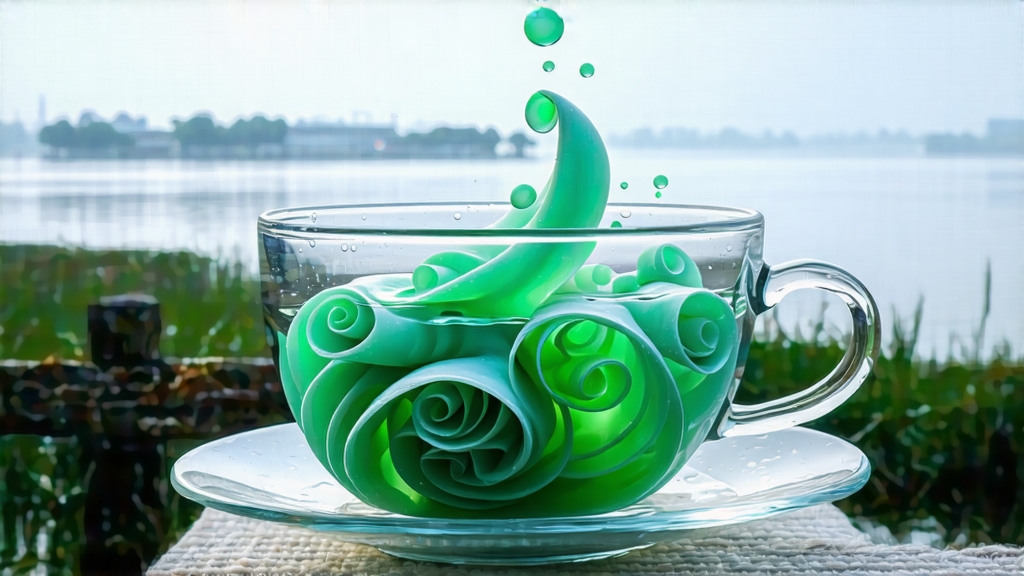
Tucked between the mist-laden hills of Dongting Mountain and the gentle ripples of Lake Taihu in Jiangsu Province, Biluochun—literally “Green Snail Spring”—has for three centuries been celebrated by Chinese poets, emperors, and now global tea lovers as one of the country’s ten most famous teas. Its tiny, spiral-shaped leaves, downy silver tips, and unmistakable fruity-floral aroma make it instantly recognizable, yet the story behind each cup is as intricate as the curls themselves.
Historical Roots
The first written record appears in the late Ming dynasty, when local growers around Dongting’s East and West mountains noticed that wild tea bushes growing among peach, plum, and apricot trees produced leaves with an unusually fragrant scent. The natural cross-pollination gave the tea a honeyed nuance that court chroniclers later described as “frighteningly aromatic.” In 1699 the Kangxi Emperor, touring the region, sampled the tea and was so impressed that he rechristened it from its earthy original name “Xia Sha Ren Xiang” (“Scary Fragrance”) to the more elegant “Biluochun,” referencing its snail-shell shape and spring harvest. Imperial patronage catapulted the tea into national fame; tribute quotas were levied, and the finest pickings were rushed to Beijing by canal and horse.
Terroir and Cultivars
Biluochun is not a single botanical variety but a style traditionally made from two local clones: the small-leaf “Dongting群体种” (qunti zhong) landrace and the slightly larger “Fuding Dabaicha” introduced later for higher yield. True Biluochun must be grown within the microclimate of Dongting’s East Mountain (Dongshan) and West Mountain (Xishan), where the lake acts as a vast heat reservoir, moderating temperature and bathing the slopes in morning mist. The humidity slows leaf growth, concentrating amino acids and volatiles, while the surrounding fruit orchards continue their centuries-old role as aromatic neighbors. Attempts to replicate the tea in Sichuan or Guizhou yield pleasant green teas, but they lack the signature magnolia-peach top note born of Taihu’s unique terroir.
Harvest Calendar
The picking window is brutally short: buds must be gathered when they reach the “one bud with one just-unfolding leaf” stage, typically between the Qingming festival (early April) and Grain Rain (late April). Pre-Qingming Biluochun, plucked when nights are still cool, offers the highest concentration of l-theanine and a silken texture that justifies its nickname “liquid jade.” After Grain Rain, temperatures rise, leaves broaden, and the tea’s delicacy fades into a more generic grassiness. Experienced pickers can harvest only 600–800 g of fresh leaf per day; 5 kg of raw material shrink to 1 kg of finished tea after firing, explaining why top-grade Biluochun commands prices higher than silver.
Crafting the Spiral
Within minutes of plucking, the buds are spread in bamboo trays no thicker than 2 cm to wither under soft mountain breeze. The goal is not desiccation but a 10–15 % moisture loss that renders the leaf pliable for the critical rolling phase. Next comes pan-firing in woks heated to 180 °C. Masters use bare hands, flicking and pressing the leaves against the iron surface in a rhythmic clapping motion that halts oxidation while coaxing the first hints of spiral shape. Temperature is then dropped to 80 °C for a 20-minute “rub and twist” stage: the artisan rolls small handfuls along the wok’s rim, applying just enough pressure to curl the leaf without breaking its cellular structure. When the tea is 60 % dry, it is removed from heat and allowed to rest, permitting internal moisture to migrate outward. A final gentle toasting at 60 °C sets the curl and locks in fragrance. The entire process is completed within three hours, after which the leaves resemble tiny snail shells, silvery at the tip and jade-green at the base.
Chemical Poetry
Gas-chromatography studies reveal more than 120 volatile compounds in Biluochun, among which linalool, geraniol, and β-ionone create the tea’s signature orchid-peach bouquet. The high ratio of buds to leaves means an elevated catechin-to-chlorophyll balance, yielding a liquor that is brisk yet sweet, with virtually no astringency if brewed correctly. Amino acids—especially